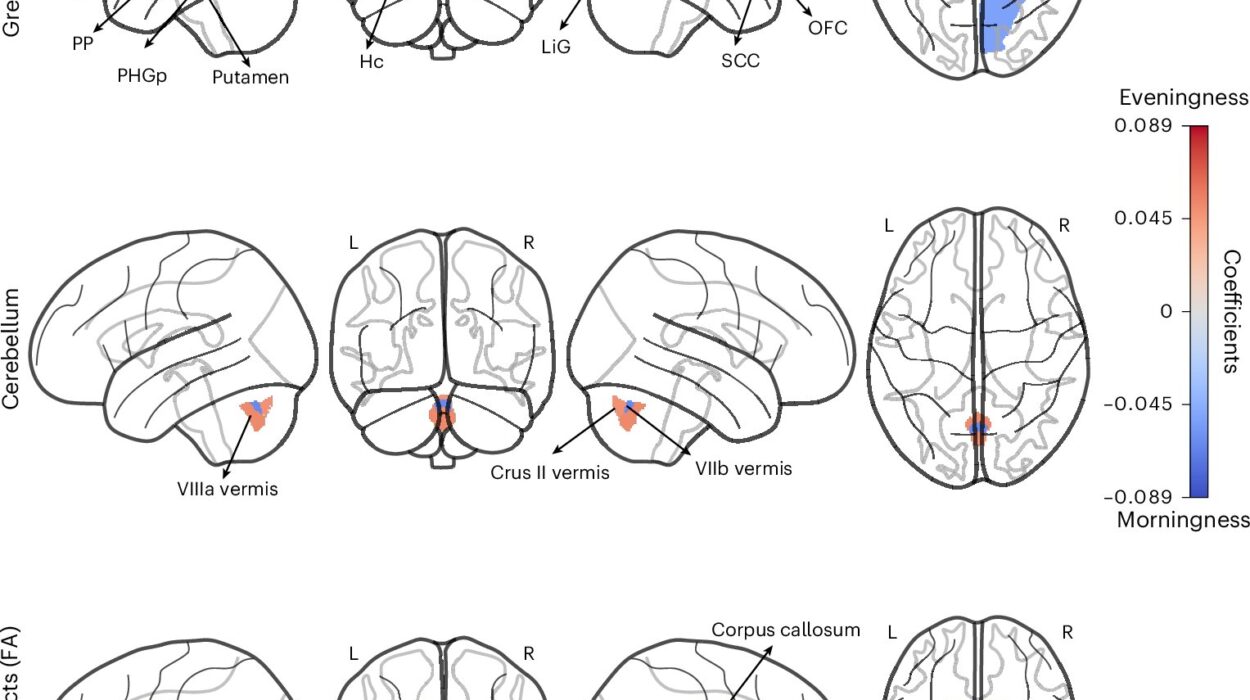The human brain is often described as the most complex structure in the known universe. It is the seat of our thoughts, memories, emotions, creativity, and identity. Every idea you’ve ever had, every problem you’ve ever solved, every dream you’ve ever dreamed—they all came from the intricate networks of neurons firing inside your skull. And like the rest of the body, the brain thrives on activity. It is not a static organ but a dynamic one, constantly reshaping itself in response to how you use it.
Modern neuroscience has shown that the brain is capable of neuroplasticity—the ability to reorganize its structure and form new connections throughout life. This means we can sharpen our minds, boost memory, and even protect against age-related decline through the right kinds of exercise. But these aren’t only physical workouts. Mental exercises, social interactions, and mindful practices can also play a powerful role in improving cognitive function.
In this article, we’ll explore ten of the best exercises—backed by science—that can enhance brain health and keep your mind sharp, agile, and resilient. Each exercise engages the brain in different ways, stimulating memory, creativity, focus, and problem-solving.
1. Aerobic Exercise: Moving the Body, Feeding the Brain
If there is one exercise scientists consistently recommend for brain health, it is aerobic exercise. Activities like brisk walking, running, cycling, and swimming don’t just strengthen the heart and lungs—they profoundly benefit the brain.
When you exercise, your heart pumps more blood throughout your body, delivering oxygen and nutrients to your brain. This increased circulation stimulates the release of growth factors such as BDNF (Brain-Derived Neurotrophic Factor), which supports the growth and survival of neurons. Studies show that regular aerobic exercise improves memory, enhances learning, and increases the size of the hippocampus—the brain region critical for memory and spatial navigation.
Aerobic workouts also reduce stress by lowering levels of cortisol and increasing the release of endorphins, chemicals that elevate mood. Over time, these changes can protect against cognitive decline, making aerobic activity a powerful tool for both mental sharpness and emotional resilience.
Even 20 to 30 minutes of aerobic exercise, three to four times a week, can make a noticeable difference in brain health. Think of it as fuel for your mind as much as for your body.
2. Strength Training: Building Muscles and Mental Power
While aerobic exercise gets much attention, strength training also plays a vital role in brain function. Weightlifting, resistance band workouts, or bodyweight exercises like squats and push-ups do more than tone muscles—they stimulate the brain in unique ways.
Research has found that strength training boosts levels of IGF-1 (Insulin-Like Growth Factor 1), a hormone that supports brain cell growth and communication between neurons. It also improves executive functions like planning, organizing, and decision-making. Older adults who engage in strength training often show better memory performance and slower cognitive decline compared to those who don’t.
Strength training also reduces inflammation and improves insulin sensitivity, both of which are linked to healthier brain aging. And because resistance exercises demand focus and proper technique, they engage the brain’s motor and cognitive networks more deeply than many repetitive physical activities.
For best results, incorporate strength training two to three times per week, targeting all major muscle groups. As your muscles grow stronger, so too will your mind.
3. Mindfulness Meditation: Training the Brain to Focus
Sometimes the best exercise for the brain requires no physical movement at all. Mindfulness meditation is a practice of focusing attention on the present moment—whether through the breath, bodily sensations, or simply observing thoughts without judgment.
Neuroscience has shown that meditation can literally reshape the brain. Regular practice increases gray matter density in regions involved in memory, learning, and emotional regulation. It strengthens the prefrontal cortex, which governs attention and decision-making, and reduces activity in the amygdala, the brain’s fear center.
Meditation also lowers stress hormones, enhances concentration, and fosters emotional resilience. In one study, participants who meditated for eight weeks showed measurable increases in hippocampal volume and improvements in working memory.
Practicing just 10 to 20 minutes a day can create significant changes over time. Like lifting weights for the body, meditation is mental training—every moment of focus builds a stronger, calmer, and sharper brain.
4. Learning a New Skill: Challenging the Mind
The brain thrives on novelty. Whenever you learn something new, your neurons form fresh connections, strengthening the brain’s adaptability. That’s why learning a new skill—whether it’s cooking, playing an instrument, dancing, or speaking a new language—is one of the most powerful exercises for cognitive growth.
Unlike routine activities, learning something unfamiliar engages multiple brain regions at once. For example, playing music requires auditory processing, motor coordination, memory, and emotional expression. Language learning demands focus, memorization, and problem-solving. Each new challenge forces the brain to stretch beyond its comfort zone, sparking the growth of new neural pathways.
Studies show that older adults who learn complex skills experience significant improvements in memory and cognitive flexibility. The harder the challenge, the greater the brain benefits.
So, if you’ve ever dreamed of painting, coding, or ballroom dancing, don’t hesitate. Every step into the unfamiliar is a workout for your brain.
5. Brain Games and Puzzles: Sharpening Mental Agility
Games are not just entertainment—they are mental gymnastics. Brain games, puzzles, and strategy-based activities can sharpen thinking skills, boost memory, and enhance problem-solving. Crosswords, Sudoku, chess, Scrabble, and even digital apps designed for cognitive training all provide mental stimulation.
These exercises challenge the brain to recognize patterns, think logically, and retain information. For example, playing chess requires anticipating an opponent’s moves, engaging working memory, and exercising strategic planning. Solving puzzles strengthens connections between brain regions, improving overall cognitive efficiency.
Research suggests that while brain games may not drastically increase overall intelligence, they can improve specific skills like processing speed, attention, and working memory. And, importantly, they keep the mind active and engaged—an essential factor in maintaining cognitive health throughout life.
Making time for puzzles or strategic games just a few times a week can offer long-term benefits for brain sharpness.
6. Yoga: Uniting Mind, Body, and Brain
Yoga is more than a form of physical exercise—it is a holistic practice that integrates movement, breathing, and mindfulness. This combination has profound effects on the brain.
Practicing yoga reduces stress, lowers blood pressure, and improves sleep, all of which contribute to better cognitive function. Neuroimaging studies show that yoga practitioners often have increased gray matter in brain regions related to attention, memory, and emotional regulation.
The mindful movements of yoga enhance proprioception (the sense of body position), which activates neural pathways connecting the brain and body. Breathing exercises stimulate the parasympathetic nervous system, calming the mind and promoting focus.
Yoga has been linked to improvements in executive function, emotional stability, and working memory. For people experiencing anxiety or age-related cognitive decline, yoga provides a gentle yet powerful way to keep the brain and body resilient.
Even practicing yoga for 20 minutes a day can make the mind clearer, calmer, and more capable of handling life’s challenges.
7. Dancing: The Joyful Workout for the Brain
Among all physical exercises, dancing may be the most delightful for the brain. It combines movement, music, coordination, memory, and emotion—all in one joyful package.
When you dance, your brain processes rhythm, recalls sequences of steps, and synchronizes body movements, engaging motor, sensory, and cognitive systems simultaneously. Studies show that dance improves memory, focus, and spatial awareness, while also boosting mood through the release of dopamine and endorphins.
One famous study from the New England Journal of Medicine found that older adults who danced regularly had a significantly reduced risk of dementia compared to those who did other physical activities. This is likely because dance combines physical exercise with social interaction and mental stimulation—a triple benefit for the brain.
Whether it’s salsa, ballet, hip-hop, or ballroom, dancing is one of the most effective and enjoyable exercises for brain health.
8. Reading and Storytelling: Feeding the Imagination
Reading is not just a way to gain knowledge—it’s an exercise that activates multiple brain regions, strengthens empathy, and improves memory. When you read, your brain translates symbols (letters) into sounds and meanings, constructing vivid mental worlds.
Storytelling, whether through reading or sharing narratives aloud, stimulates imagination, enhances language skills, and improves cognitive flexibility. It engages the brain’s default mode network, responsible for daydreaming and creativity, as well as the prefrontal cortex, which handles critical thinking.
Studies show that reading regularly improves verbal intelligence, strengthens memory recall, and even reduces stress levels. Literary fiction, in particular, has been linked to improved theory of mind—the ability to understand the thoughts and feelings of others.
By immersing yourself in books or sharing stories, you’re not just entertaining yourself—you’re giving your brain a rich and rewarding workout.
9. Social Interaction: Exercising the Social Brain
Humans are social creatures, and our brains are wired for connection. Engaging in meaningful social interaction is one of the best ways to keep the mind sharp. Conversations challenge the brain to listen, interpret, and respond quickly. Friendships and relationships provide emotional support, which reduces stress and promotes mental well-being.
Social interaction activates multiple brain areas, including those involved in language, memory, and emotion. Studies show that people with strong social networks have better cognitive function, slower cognitive decline, and a reduced risk of dementia.
Even casual interactions—chatting with a neighbor, joining a group activity, or volunteering—can provide brain benefits. More complex interactions, such as debating, storytelling, or collaborating on a project, challenge the brain even more, improving problem-solving and creativity.
In short, every conversation is a form of mental exercise. To keep your brain thriving, nurture your social connections.
10. Mind-Body Coordination Activities: Expanding Cognitive Flexibility
Finally, exercises that require coordination between the mind and body—such as martial arts, tai chi, juggling, or even video games—are excellent for brain function. These activities force the brain to integrate sensory input, motor control, and decision-making in real time.
For example, tai chi has been shown to improve balance, memory, and attention in older adults. Martial arts enhance focus, discipline, and reaction time. Even juggling, which may seem like a simple trick, significantly increases gray matter in the brain’s visual and motor regions.
These exercises improve cognitive flexibility—the ability to switch between tasks and adapt to new challenges. They also strengthen hand-eye coordination, spatial awareness, and reaction speed.
By combining movement with mental challenge, mind-body exercises offer some of the most holistic benefits for the brain.
Conclusion
Your brain is not a fixed organ—it is alive, adaptable, and capable of growth at any age. Through the right exercises, you can enhance memory, sharpen focus, boost creativity, and even protect against decline. From aerobic workouts and strength training to meditation, storytelling, and dancing, every activity on this list strengthens your brain in unique ways.
The beauty of these exercises is that they are not just about discipline or health—they are about joy, curiosity, and living fully. When you move your body, challenge your mind, connect with others, and embrace new experiences, you are giving your brain the richest possible environment to thrive.
Improving brain function is not a single act—it is a lifelong journey. Each exercise you practice adds to a stronger, sharper, and more resilient mind. And in nurturing your brain, you are nurturing the very essence of who you are.






